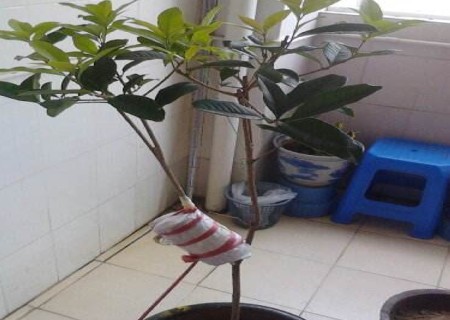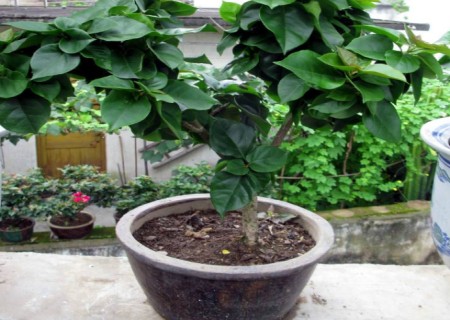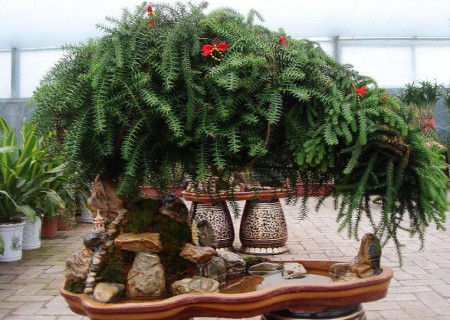The method of striping propagation of sweet-scented osmanthus
Striping propagation is to make use of the habit of branches to take root in contact with the soil, to bury a part of the branch or its stem in the soil to let it take root, and then divide it into independent plants. The striping method is one of many flower propagation, which buries the branches of the lower part of the mother plant into the soil to promote the adventitious buds of its nodes or internodes to germinate and grow new roots, and then cut them off from the mother and plant them to form a new plant.
Striping propagation is mostly used for flower shrubs with strong clumps and vines with soft branches, and for those woody flowers that are difficult to root, such as Milan, Magnolia, mast, sweet-scented osmanthus, etc., it can also be used by the method of high branch crimping to let the pressed branches take root before being cut away from the mother, which brings great convenience for flower reproduction.

Sweet-scented osmanthus striping propagation can be divided into air striping and ground striping.
1. Air crimping
It can be carried out all the year round, but it is better to operate before germination in spring. Air pressing is more suitable for family potted plants, usually around 20-25 ℃ before and after the Qingming Festival.
First of all, the 2-3-year-old branches which did not affect the crown were selected on the strong mother plant of the excellent variety for ring peeling, and the cut length was about 2 cm.
Secondly, take a pair of split bamboo slips, spread a layer of sandy moist culture soil on the inside, wrap the peeled branches together, wrap them in plastic sheeting, then tie them up with straps, and the wound will heal after about a month.
Thirdly, new roots were produced in the incision cortex after 3 months, and the rooting was examined in July. In October or the following spring, when the new roots were 3-5 cm long, they could be cut off from the mother plant. When cutting, it must be cut at the lower end of the bamboo tube, and then re-pot planting.
2. Ground pressing strip
Also known as Fu branch pressing or ordinary pressing, this is one of the most common methods. This method should be carried out in April-June or August-September (when the temperature is 25-30 ℃).
The main results are as follows: 1) the method of pushing and pressing can be used to cut the bark of the branch near the root by 1-2 cm, bend it to the ground, pile it 7-8 cm high on the injured branch with soil, compacted, often watered to keep moist, and take root for about 3 months; cut south with the mother plant in the following spring and plant into a new plant.
2) for single-stem branch pressing, select strong branches and pick off part of the leaves; use a knife as a ring peel and press into the soil, then insert a bamboo fork into the deep soil to fix the branches without bouncing or moving, and cover them with a layer of soil about 10 cm thick, leaving the shoots and leaves outside the soil. After 3 months of rooting, they can be cut off from the mother plant and planted into a new plant. In the case of potted plants, the cut branches can be pressed into another pot of soil to fix them, and then cut off and transplant them.
How does sweet-scented osmanthus reproduce quickly by striping? It can be divided into two types: low pressure and high pressure.
1. Branch pressing propagation
From the end of March to the beginning of April, depending on the number of branches that can be pressed around the female parent of sweet-scented osmanthus (generally, each female parent can press 4-5 branches), dig a ditch with a depth of 20 cm and a width of 20 cm each along the direction of the natural extension of the branches, press the branches into the ditch, fill the ditch with fertile soil, and then cultivate the soil in the pressed branch into steamed bread after pouring enough water.
Low-pressure sweet-scented osmanthus must choose a low-branched or tufted mother plant. The time is from spring to early summer, select the sturdy low-dry mother tree, cut the lower 1-2-year-old branches with a sharp knife or peel them around, reach to the xylem, then press them into the grooves 3-5 cm deep, and fix the pressed branches with wood strips, leaving only the tip and leaves outside.
2. High-altitude pressing strip
In the propagation of sweet-scented osmanthus from September to October, the bamboo tube was broken into two pieces, which was filled with wet soil and placed on the robust branches of excellent sweet-scented osmanthus varieties, supported by brackets, often adding water to keep the tube soil moist, and the branches could produce new roots after more than one month. The following spring, take down the new root and transplant it to the ground to form a robust sweet-scented osmanthus branch, which can blossom after 3 years.
The high-pressure method is to select 1-2-year-old stout branches from the mother tree in spring, cut one circle or peel it around with the low-pressure method, or cut it from the lower side, with a length of 6-9 cm, and then smear the wound with a culture medium, tie it up and down with a plastic bag, keep the matrix moist all the time in the process of culture, and cut off the mother plant for maintenance after it takes root in autumn.
Time: 2019-06-09 Click:
- Prev

High pressure Propagation of potted plants
Woody plants are more difficult to cut than herbaceous plants. People in this issue will often solve this problem perfectly and use high-pressure propagation to realize the reproduction of woody plants. High pressure is the abbreviation of high-altitude pressing strip. to put it simply, it gives a wound to the plant branch, and the root system is produced in the process of wound healing.
- Next

How to trim Australian fir bonsai
Australian fir is a very powerful ornamental plant with strong vitality and is usually evergreen all the year round. It is also a good helper to purify the air and helps human beings to improve the air environment. So it is often suitable for indoor maintenance and warmth in the lack of light. The large Australian fir bonsai has a powerful momentum.
Related
- Fuxing push coffee new agricultural production and marketing class: lack of small-scale processing plants
- Jujube rice field leisure farm deep ploughing Yilan for five years to create a space for organic food and play
- Nongyu Farm-A trial of organic papaya for brave women with advanced technology
- Four points for attention in the prevention and control of diseases and insect pests of edible fungi
- How to add nutrient solution to Edible Fungi
- Is there any good way to control edible fungus mites?
- Open Inoculation Technology of Edible Fungi
- Is there any clever way to use fertilizer for edible fungus in winter?
- What agents are used to kill the pathogens of edible fungi in the mushroom shed?
- Rapid drying of Edible Fungi

